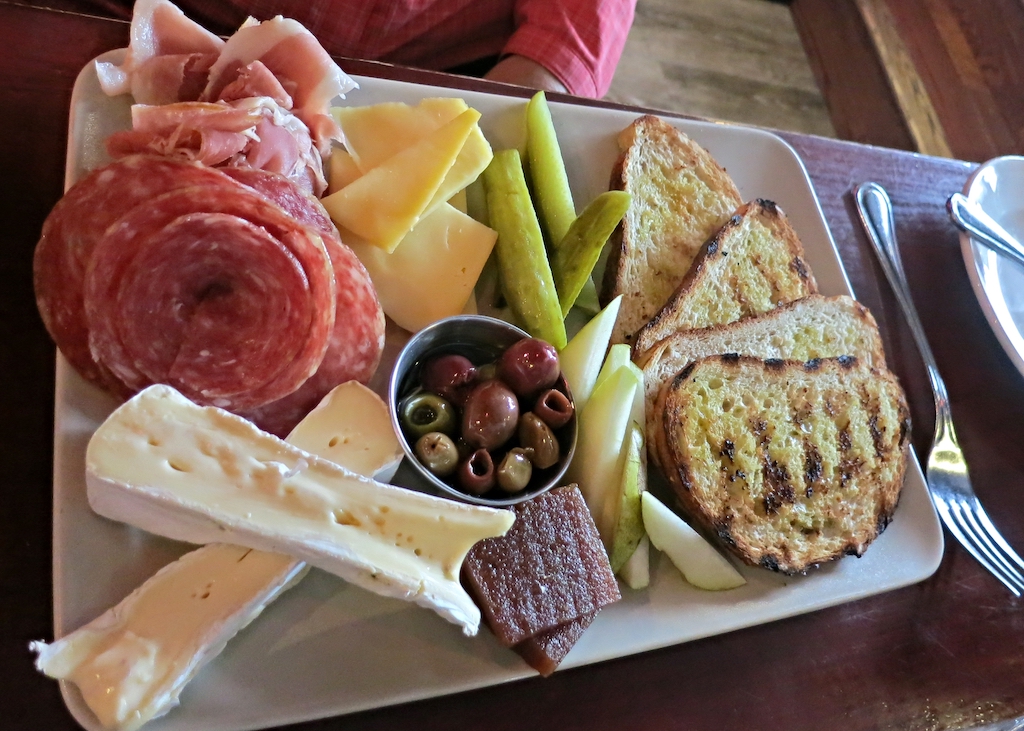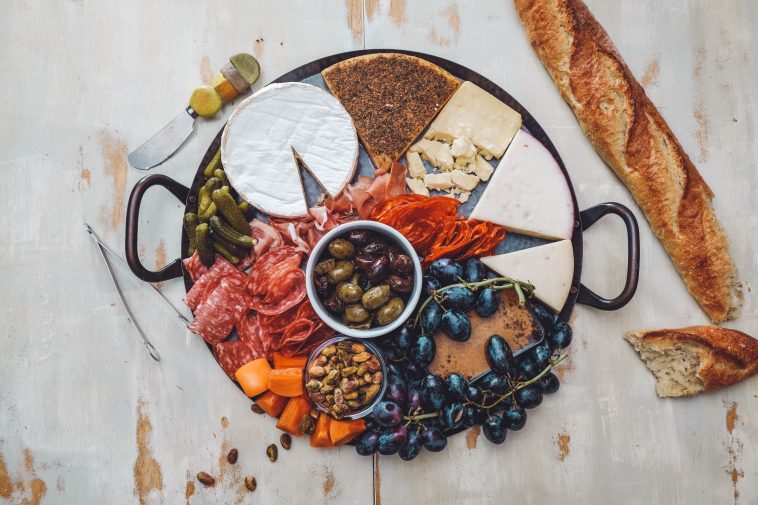Charcuterie boards are aesthetically breathtaking and never fail to taste delicious. Plus, they don’t involve cooking – only food prep! Whether you’re doing a DIY charcuterie board for a spicy date night, a party snack, or a solid eat-your-feelings session, we have your back with all the basics of building an epic board.
Charcuterie boards can be modified for vegetarian, vegan, or highly carnivorous diets – you just need to customize them by preference and make sure that you have the right ingredients on hand.
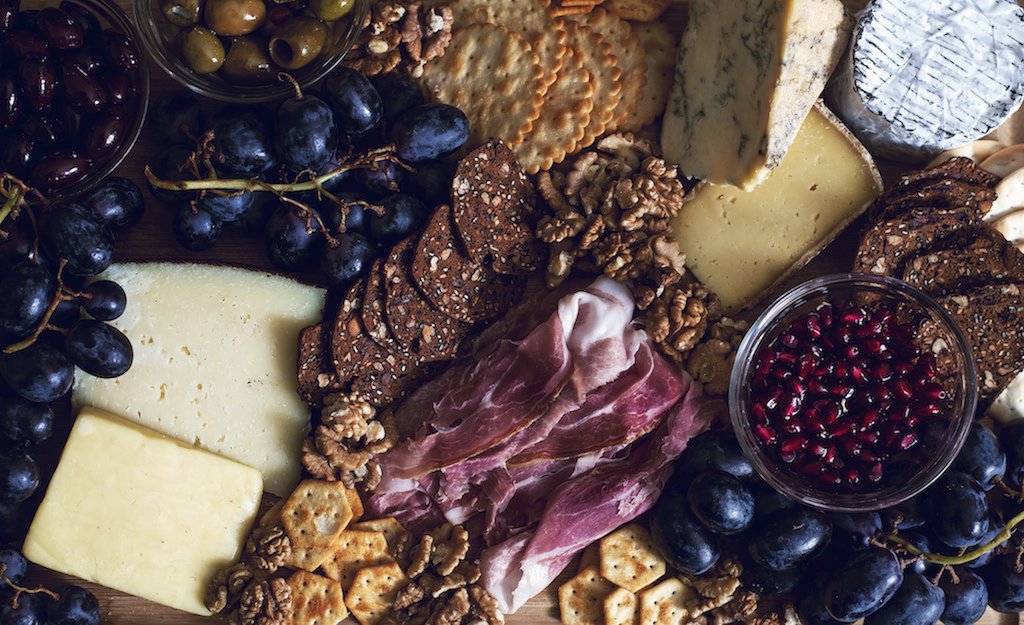
What does a charcuterie board consist of?
A charcuterie board can consist of smoked or cured meats, olives, fruits (dried or fresh), soft and hard cheeses, crackers, bread, chutneys, jams, mustard, and other condiments. It can also include nuts or seeds. These boards are an excellent way for you to flex your creative muscles.
Organizing your ingredients
Meat: Approximately four slices of meat per person should do it, but if you’re building a mostly-meats board, obviously re-consider. Meat options can include pepper salami, pepperettes, bresaola, prosciutto presented in rolls, or ham.
Smoked fish: Smoked fish is a reliable way to class up your charcuterie board selection. Consider smoked whitefish, smoked trout, or smoked salmon. You can find all of this at a Jewish delicatessen, or even your local fish market.
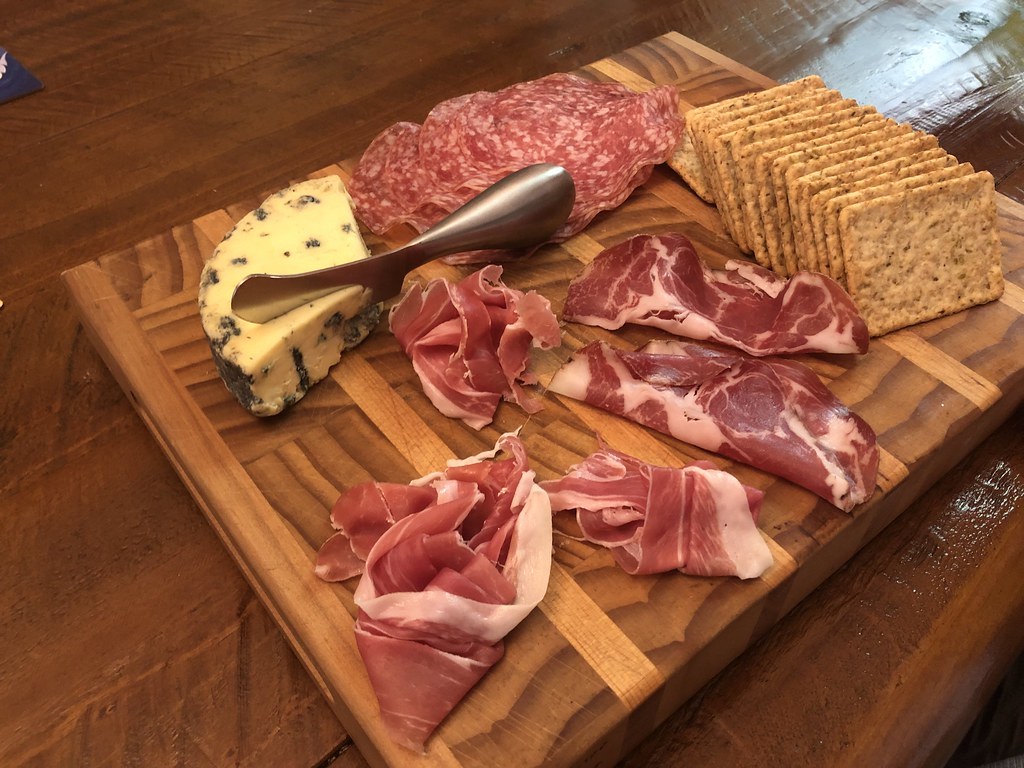
Bread/crackers: You can opt for fancy rosemary and olive oil crackers, or go for Triscuits. Either way, we suggest offering both a buttery cracker option, a whole grain option, and some baguette or sourdough slices.
Cheese: There are so many textures and kinds of cheese available, and we suggest adding a mild, medium, and sharp option. Consider a triple creme brie, a melt-in-your-mouth burrata, a blue cheese, gouda, or gruyere, combining where you think it’s complimentary. Think about blending sheep, goat, and cow’s milk, which each have a distinct flavor. Put the wedge and cheese knife on the board so you can cut and go.
Olives/pickles: Cornichons, olives, and pickles are a great way to add flavor and texture to your board. These ingredients can be wet, so it makes more sense to place small bowls or saucers on the final platter rather than straight on it. However, if you have cornichons, adding straight to the dish might work.
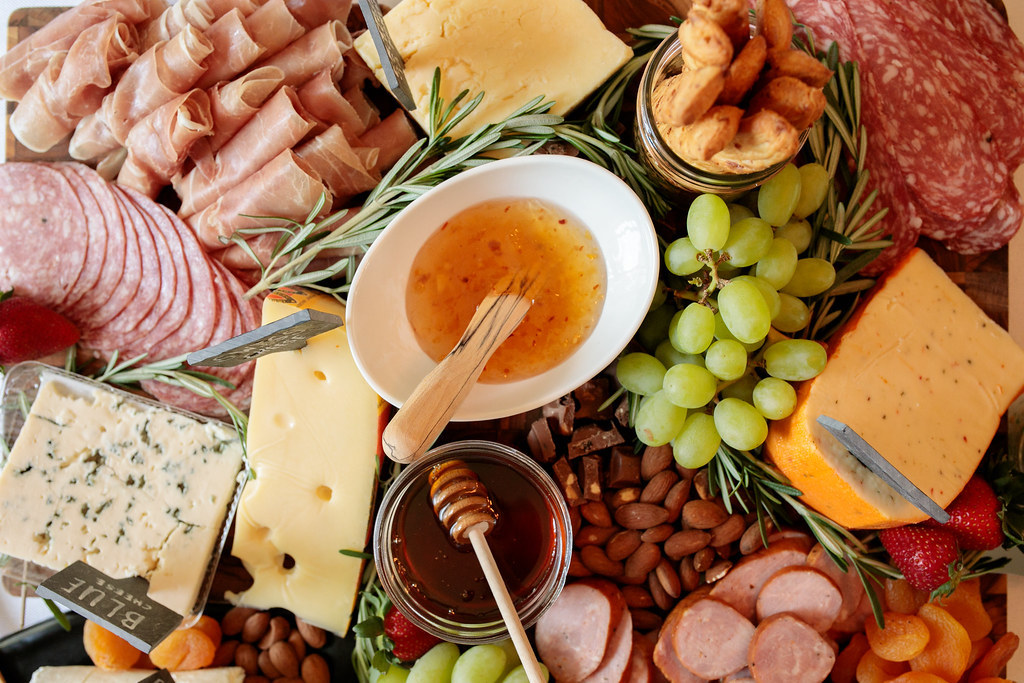
Dips/condiments: Never underestimate the power of a sauce. When things start getting dry on the charcuterie board (crackers can catalyze that), make sure you have some chutneys, jellies, and other dips. Mustard goes great with meat and cheeses, while a spicy-sweet chutney goes with virtually anything – even just the cracker.
Nuts/seeds/fruit: The healthiest and most neglected aspect of a charcuterie board is also one of the tastiest. Try fresh fruit like berries, grapes on the vine, and lychees, as well as decadent additions such as figs. Dried fruits are also particularly mouthwatering when combined with other ingredients – try mangoes, cranberries or raisins, apricot, and apples. For nuts, pecans and cashews are buttery, while almonds have a bit more bite to them.
Presentation
First, get a platter or ideally, a wooden cutting board for some rustic charm. You should organize the ingredients into artful clusters, piling and stacking to your heart’s desire. Try to combined different colors and don’t put too many similar looking items together. Don’t be afraid to channel your inner chef, and remember to fill in those gaps.
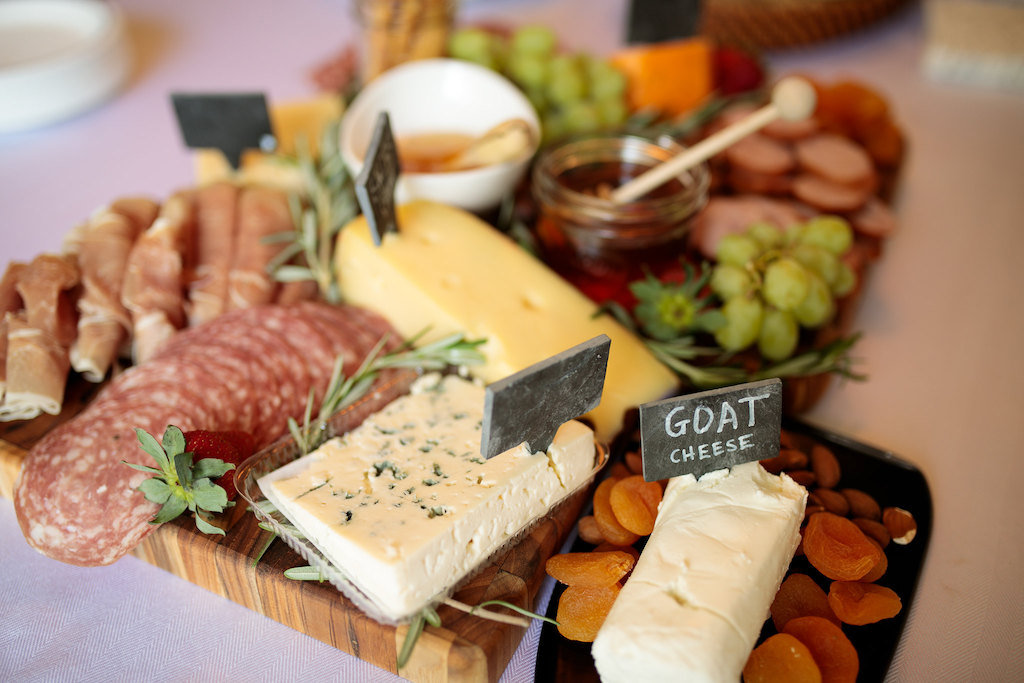
Recipe Ideas
There are tons of possible ingredients you can mix and match on your platter. Varying colors and texture are essential, and the pros have some useful tips to help those of you starting out. Here are some links to charcuterie recipes we’re obsessed with. If you’re not feeling motivated to DIY right now, there are loads of deliveries coming straight from online gourmet shops, as well as plenty of quarantine-friendly UberEats and Postmates options.
Dairy-Free Cranberry Rosemary Cheese Roll and a Holiday Charcuterie Board
The Ultimate Burrata Cheese Board
